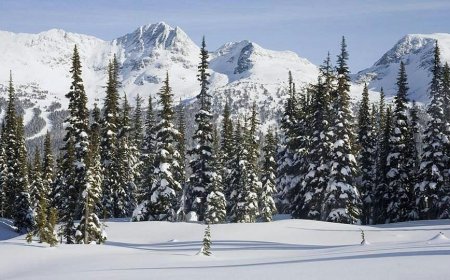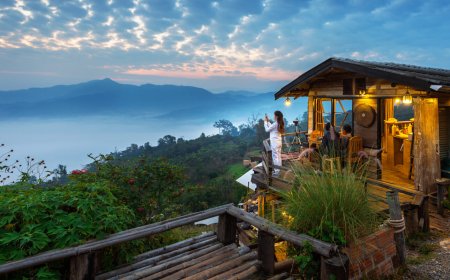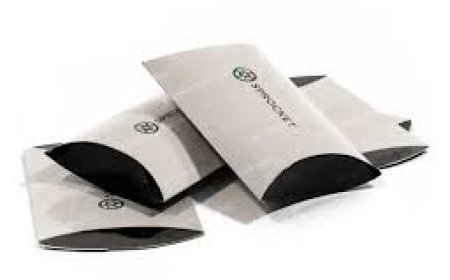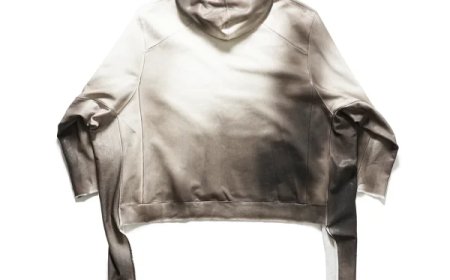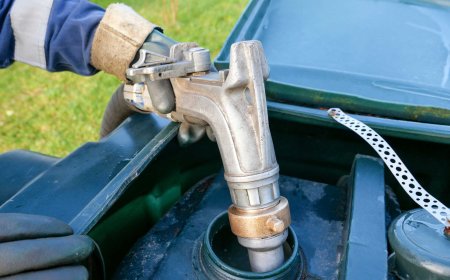How to Make Annapurna Packing a Guaranteed Success
The Annapurna Circuit offers jaw-dropping Himalayan views, peaceful trails, and a true taste of Nepalese life.

Packing for a trek to theAnnapurna Circuit needs some thoughtful planning for comfort and safety along the way. To make sure you have what you need, start by checking out the weather and terrain. The Annapurna area has lots of different altitudes, so it's smart to layer your clothing. Begin with a moisture-wicking base layer to help keep sweat away from your skin, then add insulating mid-layers like fleece or down jackets, and finish off with a waterproof and windproof jacket. This way, you can adjust what youre wearing as the weather shifts, keeping warm without getting too hot.
Footwear is super important, too. Get yourself a good pair of sturdy trekking boots that fit well and offer good ankle support. Break them in before your trip to avoid blisters. Also, pair them with quality trekking socks that wick moisture and cushion your feet. If youre facing snow or muddy trails, dont forget gaiters.
When picking out a backpack, choose one thats comfy, with padded shoulder straps and a hip belt to help balance the weight. A size of 40 to 50 liters usually works well, giving you space for clothes, gear, snacks, and any emergency stuff. For easy access, use dry bags or packing cubes to keep your items organized and dry.
Dont forget some essential gear like a sleeping bag rated for cold temperatures, a reusable water bottle or hydration system, a headlamp with extra batteries, trekking poles, and a basic first-aid kit. Also, pack sunscreen, lip balm, and sunglasses to shield yourself from the strong sun at higher altitudes.
Finally, plan your meals and snacks wisely. Bring lightweight, high-energy foods like nuts, dried fruits, and energy bars to keep your energy up during long days of trekking. With these tips and good packing, your Annapurna trek will be comfortable, safe, and memorable.
Pick the Right Backpack
A solid trip starts with a good backpack. For the Annapurna trek, grab a 4050L pack thats sturdy, with comfy straps and a rain cover. Go for one with several pockets so you can easily grab what you need. Look for a breathable back to keep you cool, and a hip belt to help with weight distribution and back pain. Your pack should be light but tough enough for rough trails. Dont overstuff itjust bring what you need. A decent backpack makes a big difference in how comfy you feel and how well you can keep going during the trek.
Pack Light, Pack Smart
Keeping your gear light is key for the long trails and changing heights of the Annapurna Circuit. Overpacking will slow you down. Stick to versatile clothes and compact gear. Use packing cubes or bags to stay organized. Choose light, quick-drying fabrics instead of bulky stuff. Dont duplicate itemsjust pack enough for layering, plus a few backups. Ideally, your pack should weigh under 1012 kg if you're carrying it yourself. Every piece of gear should have a purpose. The lighter your load, the more fun youll have without extra weight dragging you down on those steep paths.
Layering is Key
The weather around Annapurna can change fast. Layering helps you stay comfy. Start with a moisture-wicking base layer to keep sweat off your skin. Add a warm middle layer like fleece or a light down jacket. Finish off with a waterproof and windproof outer layer. This way, you can adjust no matter if its warm, chilly, or snowing higher up. Dont forget thermal underwear for cold nights and a neck gaiter for protection against wind and dust. Smart layering keeps your body temperature steady and helps you cope with any weather.
Good Footwear is Crucial
You need reliable shoes for this trek. Get sturdy, broken-in hiking boots that support your ankles, have a solid grip, and are waterproof. They should be comfy for long hikes and handle rocky, slippery, or snowy areas. Break them in ahead of timenever try new shoes on the trail. Use moisture-wicking socks and bring extras to avoid blisters. Lightweight camp shoes or sandals are great for evenings. The right footwear can keep you from injuries and fatigue, which is especially important on the Annapurna Circuits tough paths.
Dont Forget Handy Accessories
Little items can leak out. A warm hat, sun cap, UV sunglasses, and trekking poles can make a big difference. Bring gloves (thin ones and warmer ones) for those high passes. A headlamp with spare batteries is a must for early hikes or power outages. Sunscreen, lip balm with SPF, and a rain poncho are important too. A quick-dry towel, toiletries, and earplugs are helpful for teahouses. These things are small but make your trek smoother and safer. Packing these extras shows youre prepared, and they can improve your trip.
Keep Your Trekking Documents in Check
Dont overlook the importance of keeping your travel and trekking documents safe and handy. Bring your passport, permits (like ACAP and TIMS), insurance info, and a few passport photos. Use a waterproof case to keep things together and safe from splashes or rain. Always have a digital copy on your phone and email, just in case you lose them. Youll need these documents at checkpoints or for emergencies. Also, write down emergency contacts and embassy numbers. Staying organized can save you a lot of hassle during the trek.
Protect Your Electronics
Electronics can make your trip better if you manage them well. Bring a power bank, universal adapter, and charging cables. Some teahouses charge for electricity, so having backup power helps. Keep your phone in airplane mode to save battery while still using it for maps, photos, and journaling. A lightweight camera is a nice option for those into photography. Keep your gadgets safe with waterproof cases, especially when it rains or during river crossings. Extra batteries for headlamps and GPS devices are smart to have, too. Make sure you check your electronics before hitting the trail.
Stay Hydrated and Fueled
At higher altitudes, you can get dehydrated fast, so always carry a refillable water bottle or hydration bladder. Bring water purification tablets or a filter, since not all water sources are safe. Sip on water throughout the day instead of waiting until you feel thirsty. Pack energy snacks like nuts, dried fruits, protein bars, and electrolyte packets. Theyll help you keep going on long climbs. While you can eat at teahouses, having snacks in between keeps your energy up. Staying hydrated and well-fueled helps avoid altitude sickness and supports your recovery at the end of each day.
Bring First Aid and Health Essentials
A small but complete first-aid kit is a must-have. Include blister pads, band-aids, antiseptic cream, pain relievers, altitude meds (like Diamox), anti-diarrhea pills, and rehydration salts. Dont forget personal prescriptions and allergy medications. Hand sanitizer, wet wipes, and a thermometer are also handy. At high altitudes, even minor issues can get worse quickly, so tackling problems early is key. Make sure you know how to use everything. Medical help might not always be available nearby. Being prepared keeps you safe and gives you peace of mind while trekking.
Leave Space for Souvenirs
Its easy to want to fill every bit of your pack, but leave a little room! Along the Annapurna Circuit, you can find cool handicrafts, local snacks, or wool items worth taking home. Lightweight souvenirs like scarves, handmade jewelry, or prayer flags can add special memories from your trip. Keeping 1015% of your bag empty helps you avoid packing stress and lets you enjoy spontaneous finds. If your bag is too full, you might have to leave something behind or pay for extra weight. Smart packing isnt just about what you takeits also about making space for the memories youll collect.
How to prepare for the Annapurna Circuit?
To prepare for the Annapurna Circuit, build your stamina with regular cardio (hiking, running, cycling) at least 68 weeks in advance. Strengthen your legs and core through squats, lunges, and core exercises. Practice hiking with a loaded backpack to get used to the weight. Educate yourself on altitude sickness and how to prevent it. Secure your permits (ACAP and TIMS) and book accommodations if trekking during peak season. Pack light but smart. Finally, mentally prepare for long trekking days, weather changes, and basic facilitiesembracing simplicity is key to enjoying the Annapurna experience.
How to pack for Annapurna?
Packing for Annapurna requires balancing essentials and weight. Start with layered clothing: base layers, a fleece jacket, and a down jacket for warmth. Waterproof jacket and pants are crucial. Bring quick-dry shirts, thermal wear, gloves, and a warm hat. Footwear should be sturdy, broken-in hiking boots, plus sandals for teahouses. Include a sleeping bag (rated for -10C), headlamp, water purification tablets, sunscreen, lip balm, and toiletries. Pack light snacks and a first-aid kit. Use packing cubes for organization. A duffel bag for porters and a daypack for essentials during the hike work best. Keep the total weight under 15kg.
How to prepare for ABC?
To prepare for the Annapurna Base Camp (ABC) trek, start with cardiovascular training like hiking, stair climbing, or jogging 45 times a week. Strengthen your legs and improve balance with squats, lunges, and core workouts. Train with a backpack to simulate trek conditions. Acclimatize properly during the trek to prevent altitude sickness. Pack appropriate gear, including layered clothing and waterproof items. Check for permits (ACAP and TIMS) and understand the route options. Mental readiness is essentialweather changes, basic accommodations, and long walking days are part of the experience. A positive mindset enhances your ABC journey significantly.
What backpack is best for Annapurna?
For the Annapurna trek, a 3040L daypack is ideal if you have porter support, while 5065L is best for independent trekkers. Choose a backpack with a supportive frame, padded shoulder straps, and a ventilated back panel. Look for adjustable sternum and hip belts to distribute weight evenly. A rain cover is essential, as the weather can shift quickly. Go for top-loading backpacks with multiple compartments for easy access. Brands like Osprey, Deuter, and Gregory are popular for their comfort and durability. Hydration-compatible packs are useful for long trekking days. Always try it on with weight before your trek.







